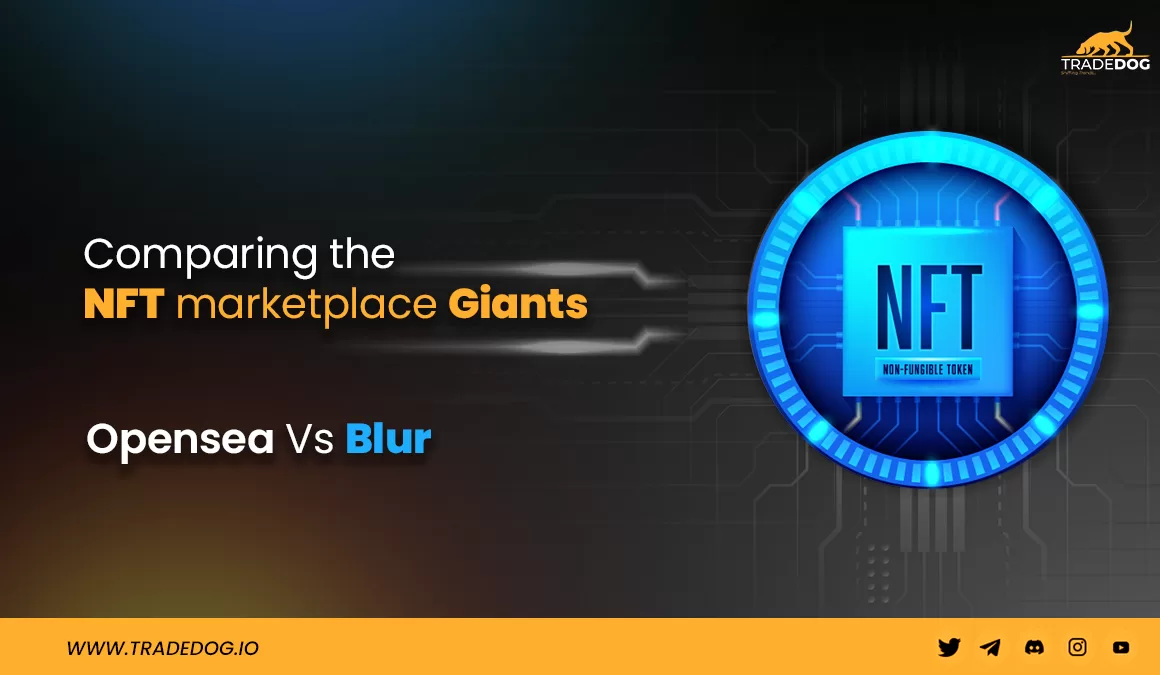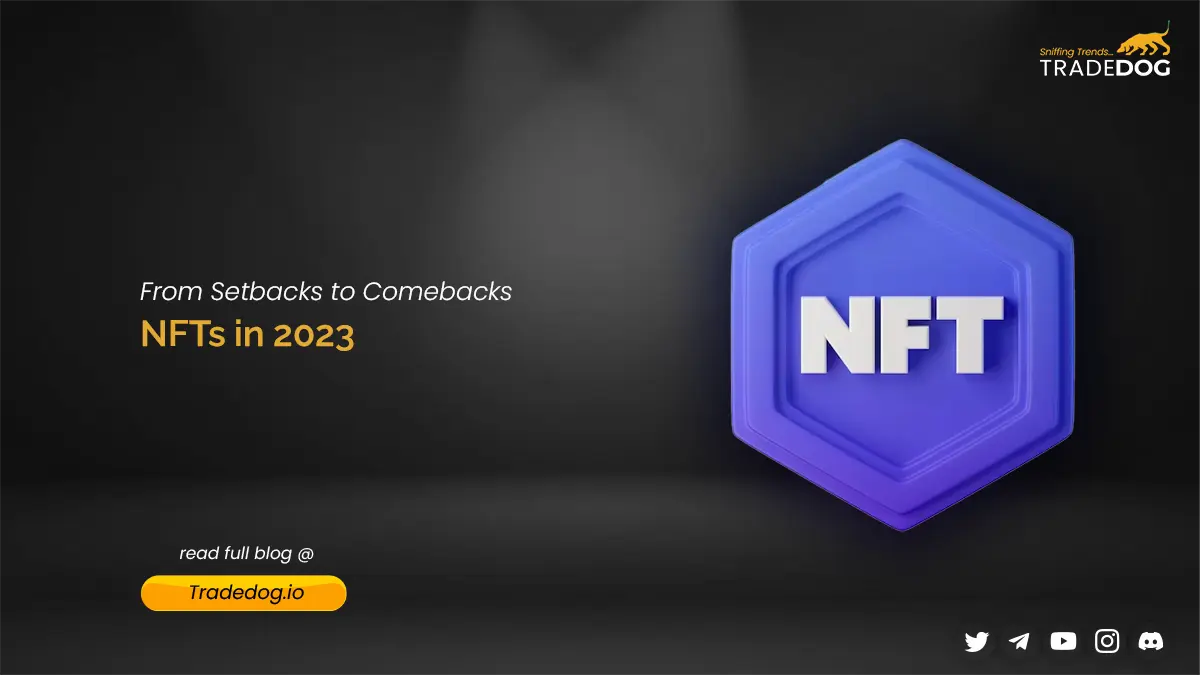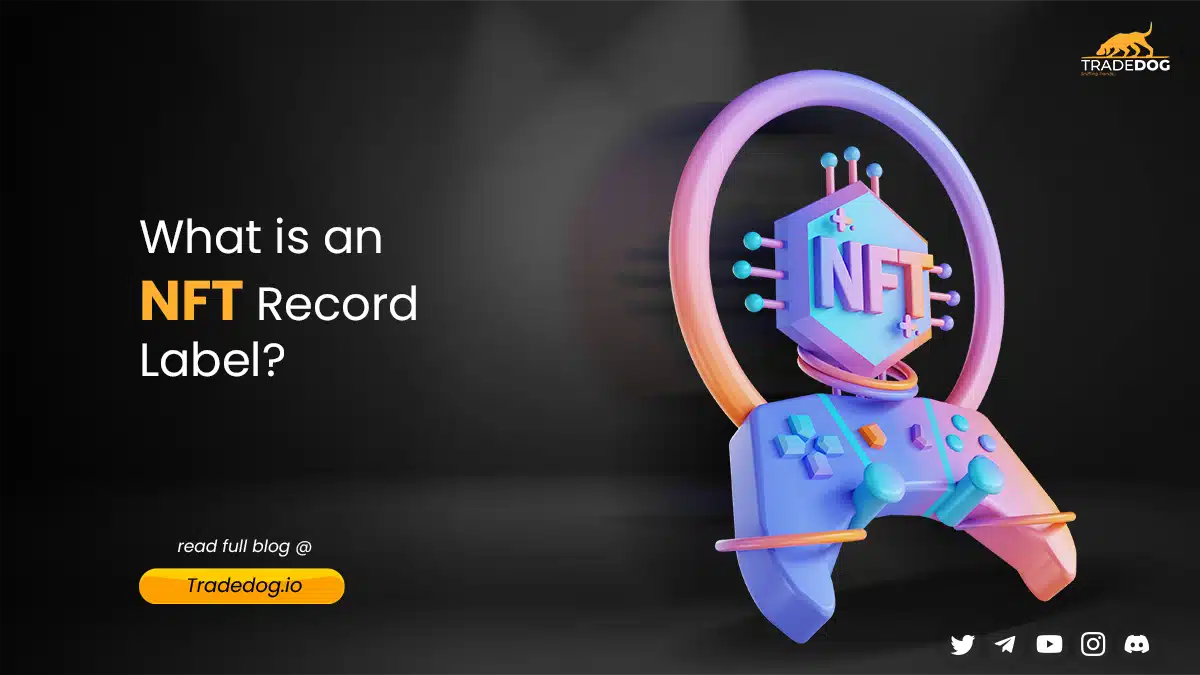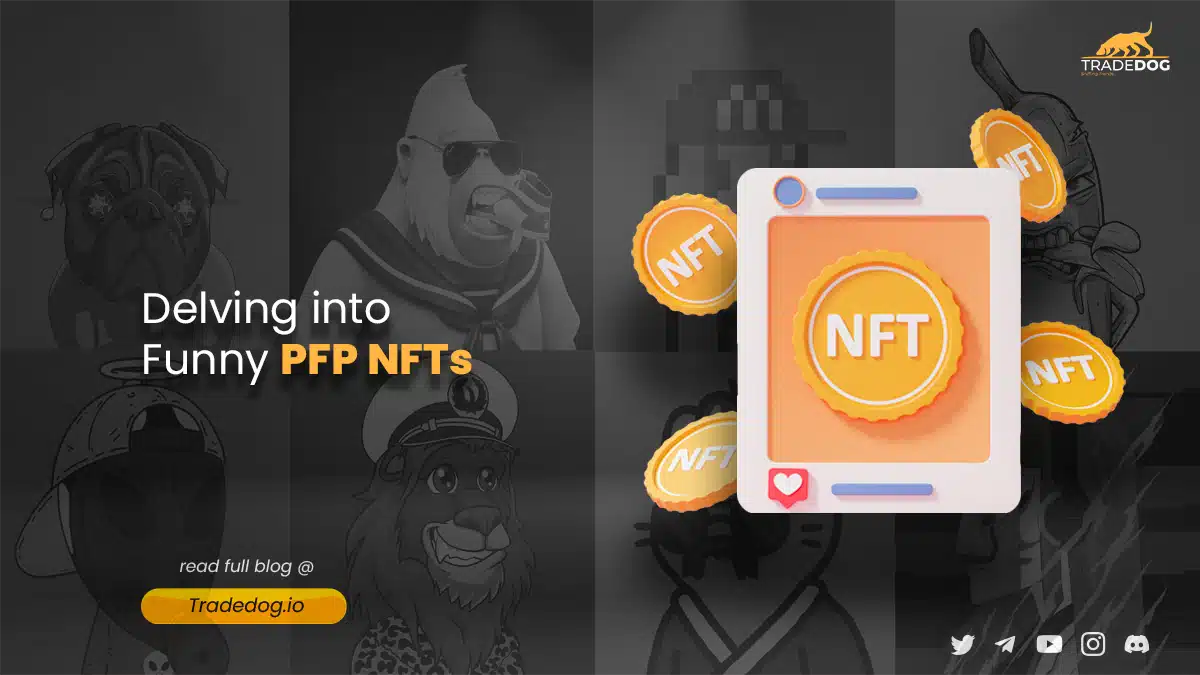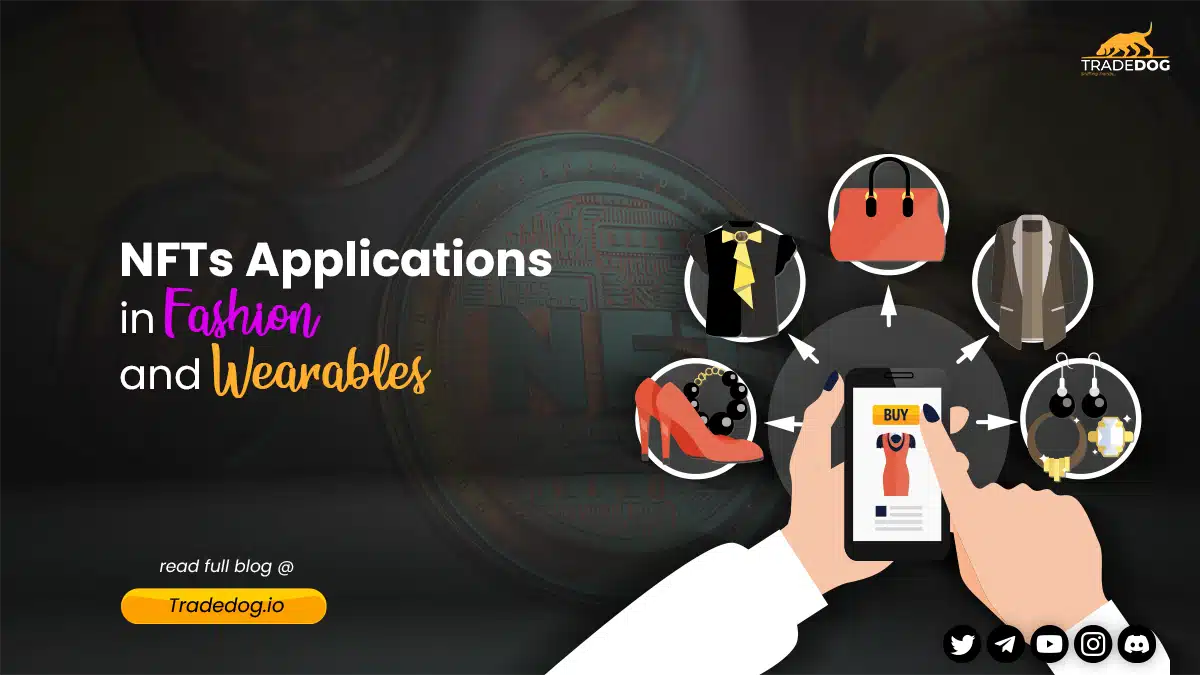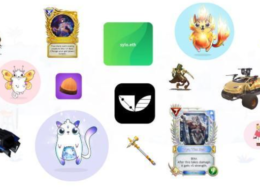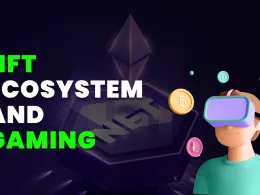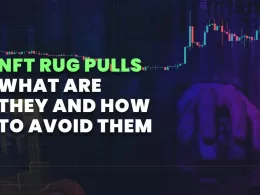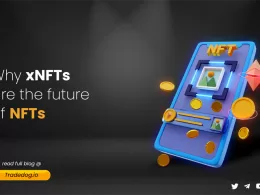Quick Links
Introduction
NFTs have taken the world by storm and have become a new way for artists, collectors, and investors to interact with digital art and collectibles. With the explosion of the NFT market, several marketplaces have emerged, each with its unique features and benefits.
In this blog, we will be taking a deep dive into OpenSea and Blur, comparing them by their features, token utilities(in the case of Blur), and some on-chain data!
So whether you’re an artist looking to sell your digital artwork or a collector looking to add unique digital assets to your collection, join us as we explore the differences between these giant NFT marketplaces!
What are NFT Marketplaces?
An NFT (non-fungible token) marketplace is a digital platform where creators can sell and buyers can purchase unique digital assets in the form of NFTs. They are a type of blockchain-based token representing ownership of a specific digital asset, such as art, music, videos, or even virtual real estate.
NFT marketplaces provide a platform for creators to showcase and sell their unique digital creations and for buyers to discover and purchase them using cryptocurrency or fiat money. These marketplaces offer features such as bidding, auctions, and the ability to set prices for digital assets.
NFT marketplaces have become increasingly popular in recent years due to the explosion of interest in digital art and collectibles and the growing acceptance of cryptocurrency as a form of payment. The two most popular are OpenSea and Blur!
What is OpenSea?
OpenSea is a popular NFT marketplace that allows creators to showcase and sell their digital assets, and buyers to discover and purchase unique digital collectibles using cryptocurrency. It was founded in 2017 by Devin Finzer and Alex Atallah, and since then has become one of the largest NFT marketplaces in the world.
OpenSea supports various digital assets, including artwork, game items, virtual real estate, and more. It offers a user-friendly interface that allows creators to upload and list their digital assets for sale easily, and buyers to easily browse and purchase them using popular cryptocurrencies such as Ethereum and Bitcoin.
OpenSea also provides features such as auctions, bidding, and setting prices for digital assets. Additionally, it has a strong community of users, including artists, collectors, and investors, who participate in the marketplace and contribute to its growth.
Let’s understand the features even better through the section below:
Features of OpenSea
- NFT Gifting: NFTs can be given as gifts to other OpenSea users by using this service. If you can’t discover your friend’s OpenSea login, you can send an NFT gift to their ETH address, enabling them to receive it right away in their wallet.
- Auctions and Bidding: OpenSea allows creators to list their digital assets for auction, which can help drive up the price and generate more interest from buyers. Additionally, buyers can bid on digital assets listed for sale, resulting in a lower purchase price.
- Set Your Own Prices: Creators can set their own prices for their digital assets, giving them more control over the sales process.
- Secondary Sales: OpenSea supports secondary sales, meaning creators can earn royalties each time their digital assets are sold in the marketplace. This creates a recurring revenue stream for creators and incentivizes them to continue creating and selling digital assets on the platform.
What is Blur?
Blur is a relatively new NFT marketplace that offers a unique approach to buying and selling digital assets. Besides enabling the purchase and sale of NFTs, it also provides services like analytics, portfolio management, and pricing comparisons of NFTs on various marketplaces.
Founded in 2021 by the team behind the popular messaging app Kik, Blur aims to provide a simple and easy-to-use platform for creators and buyers alike.
Blur is built on the Flow blockchain, which offers fast and low-cost transactions, making it an attractive option for creators who want to sell their digital assets without high fees. It also offers several unique features that set it apart from other NFT marketplaces. Let’s read about some below.
Features of Blur
Blur offers several unique features that set it apart from other NFT marketplaces. These include
- Curated Collections: Blur features a curated collection of NFTs, including exclusive drops and limited edition releases. This creates a sense of exclusivity and scarcity that can drive up the value of digital assets.
- Social Features: Blur allows users to follow their favorite creators, comment on digital assets, and interact with other community members. This creates a social experience that can be fun and engaging for both creators and buyers.
- Royalties and Smart Contracts: Blur uses smart contracts to ensure that creators receive a percentage of the sale price each time their digital assets are sold on the platform. This creates a recurring revenue stream for creators and incentivizes them to continue creating and selling unique digital assets on the platform.
- Low Fees: Blur charges lower fees than many other NFT marketplaces, making it an attractive option for creators and buyers.
The BLUR Token
Blur Token (BLUR) is an ERC-20 token that serves as the native token of the Blur NFT marketplace. It has several utilities within the platform, including
- Payment Method: BLUR can be used to purchase digital assets on the Blur marketplace. Buyers can use BLUR to pay for digital assets, and creators can receive BLUR for their sales.
- Staking: BLUR holders can stake their tokens on the platform, which allows them to earn rewards in the form of additional BLUR tokens. Staking helps to incentivize long-term holding of BLUR and supports the growth and development of the platform.
- Governance: BLUR holders have voting rights that allow them to participate in platform governance. This means that they can vote on proposals related to the platform’s development, such as upgrades, improvements, and new features.
- Discounts: BLUR holders can receive discounts on platform fees, saving them money when buying or selling digital assets on the marketplace.
The live Blur price as of 10th March 2023 is $0.479992 USD with a 24-hour trading volume of $230,967,816 USD. It has a circulating supply of 404,590,734 BLUR coins and a live market cap $194,200,197 USD.
Comparison: OpenSea Vs. Blur
| Basis | OpenSea | Blur |
| Supported Blockchains | EthereumSolanaPolygonAvalancheArbitrum | Ethereum |
| Transaction Fees | 2.5% is charged as trading fees on OpenSea | No trading fees are charged, 0.5% royalties |
| Aggregator | OpenSea sources its listing through its own marketplace. | Blur works as an aggregator of marketplaces, meaning it also sources listings from other marketplaces. |
| Curation | OpenSea has a more open marketplace where anyone can list their digital assets for sale. | Blur features a curated collection of NFTs, including exclusive drops and limited edition releases. |
Which one is leading(On Chain Analysis)? (Data as of 15-03-2023)
| Basis | OpenSea | Blur |
| Total Trading Volume | $39.5B | $2.8B |
| Total Transactions | $51M | $2M |
| Total Users | 4.2M Users | 178K Users |
| Total Platform Fee Value | $940M | $0 |
| Total Royalty Fee Value | $1.9B | $19.7M |
A look at the on-chain data reveals that OpenSea is by far leading ahead of Blur, primarily owing to its 5+ years of inception. But, to keep the level of the parameters, we will compare them on the same scale since the launch of Blur.
An intriguing development can be seen when we compare OpenSea with Blur using Hildobby’s Dune dashboard.Due to the airdrop incentives that sparked charges of wash trading on Blur, the platform had been outpacing OpenSea regarding trade volume for some time. Nonetheless, trading volume on Blur skyrocketed following the airdrop on February 15, 2023, as shown below:
In fact, the statistics become even more impressive since they go beyond trading volumes.Blur has surpassed OpenSea in weekly trade count since the latter’s launch in October 2022. Have a look:
Not just this, the weekly user count of Blur seems to be overtaking that of OpenSea really fast:
Even in transactions that involve paying royalties, Blur is currently in the lead:
Conclusion
In conclusion, both Opensea and Blur offer unique features and benefits to their users. Opensea is the larger and more established marketplace for buying and selling NFTs, with a wider range of assets available and a more established user base. On the other hand, Blur offers a more curated selection of NFTs and a more user-friendly platform for new NFT collectors.
Ultimately, the choice between Opensea and Blur will depend on your individual needs and preferences as an NFT collector. If you are looking for a wider selection of assets and a more established marketplace, Opensea may be the better choice for you. However, if you are new to NFTs and looking for a more curated selection of high-quality assets and a more user-friendly platform, Blur may be the better option.
Regardless of which platform you choose, the world of NFTs is constantly evolving and expanding. As the market grows, we can expect to see new platforms and marketplaces emerge, each with its own unique features and benefits.





